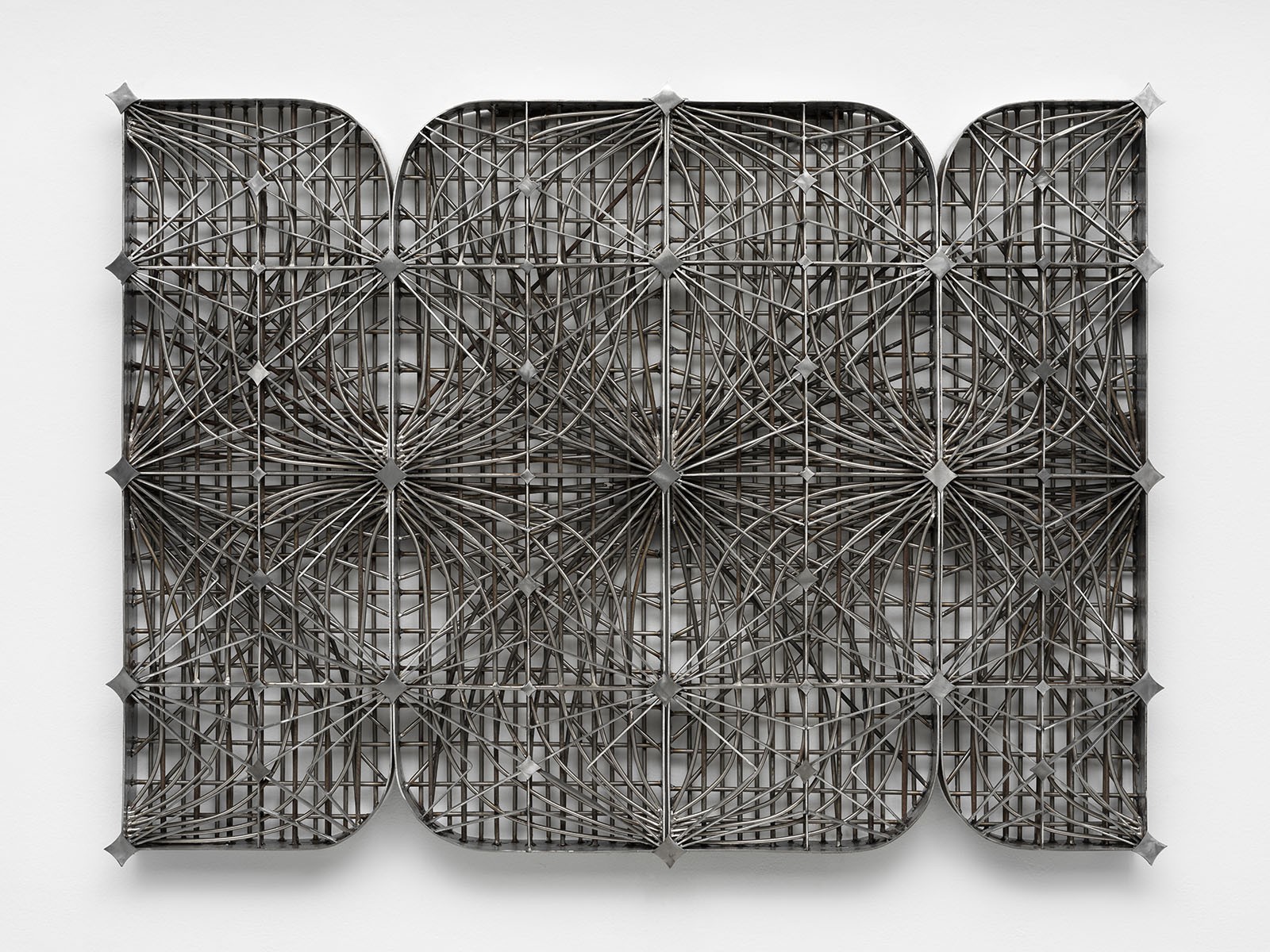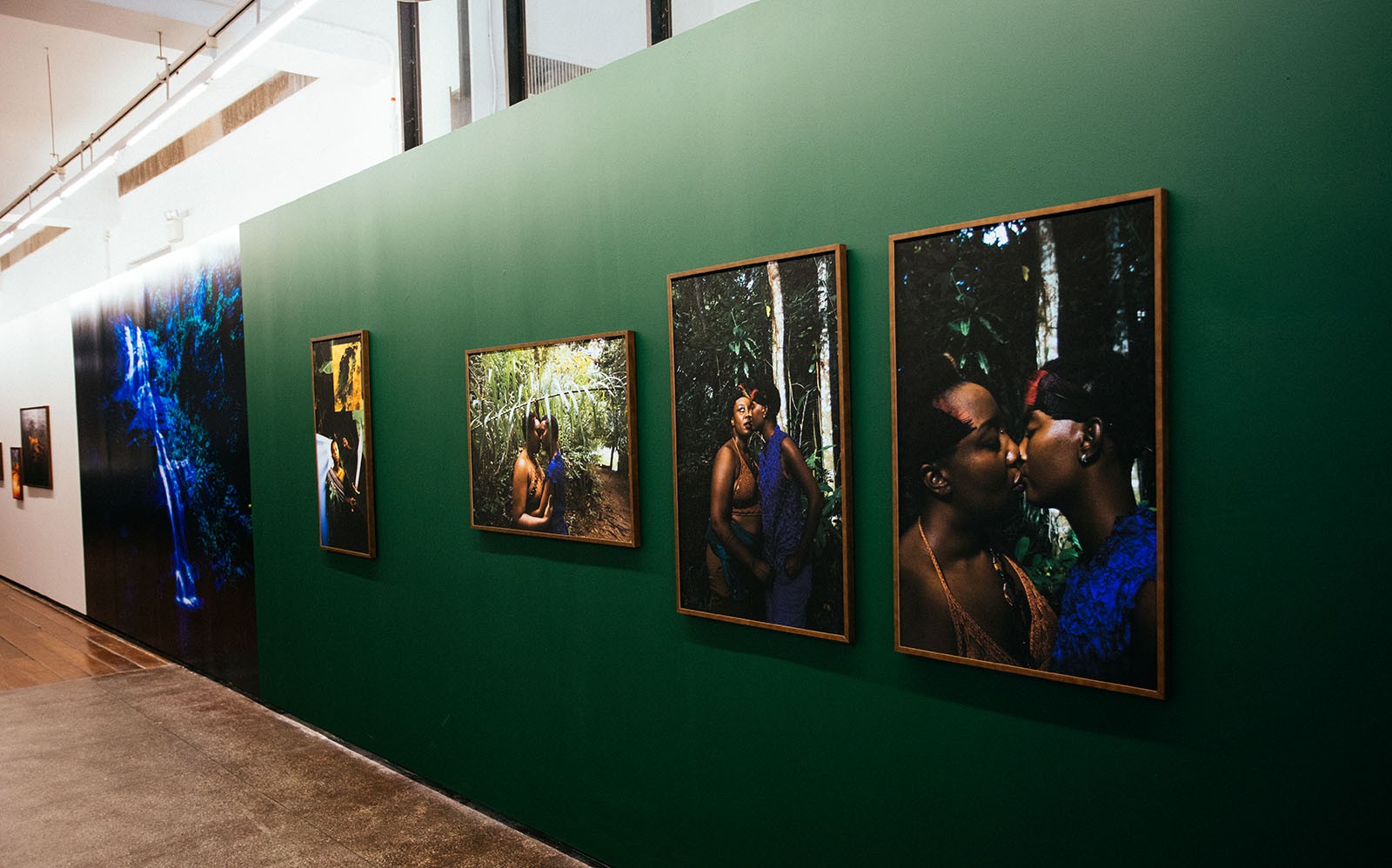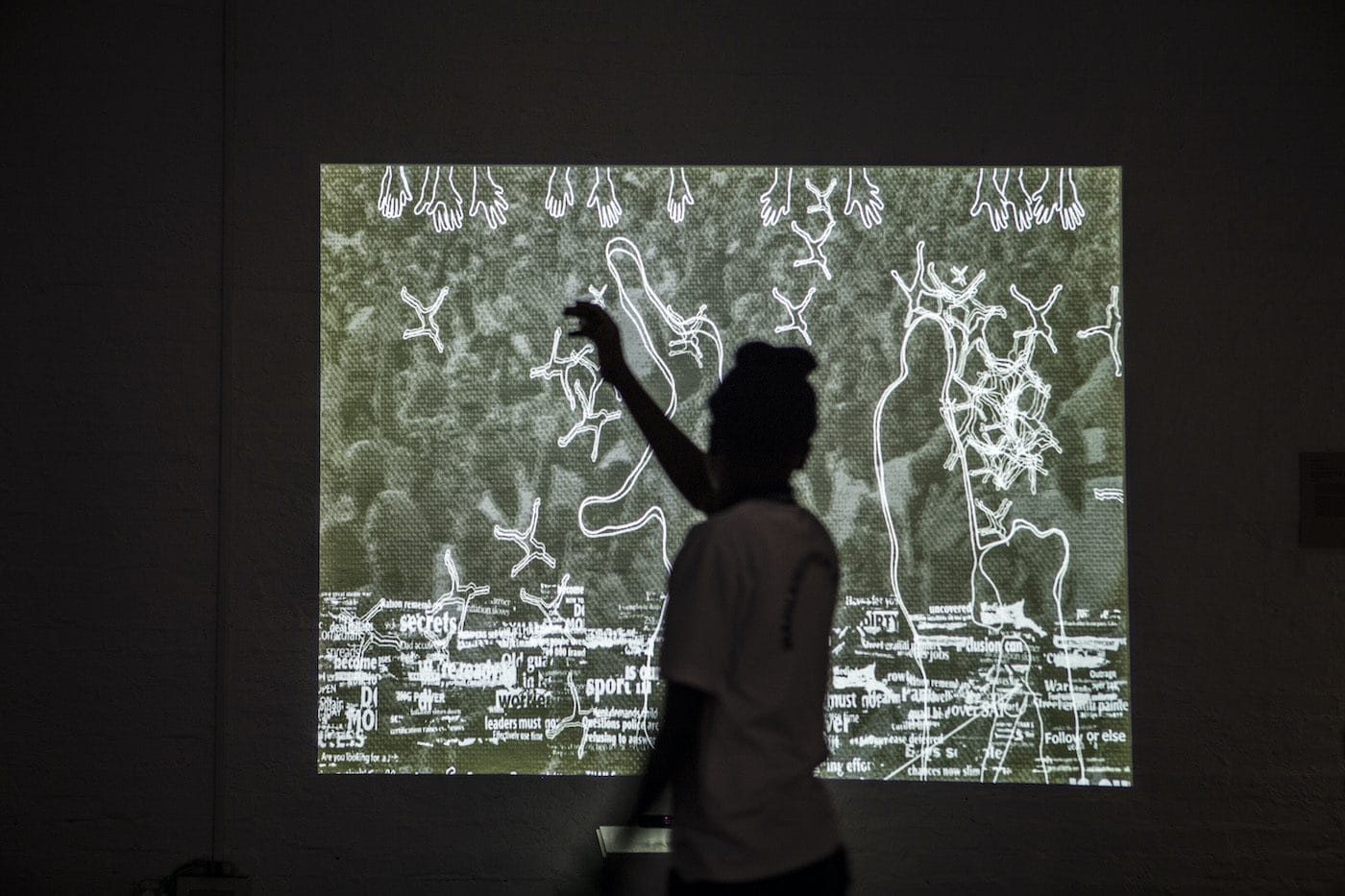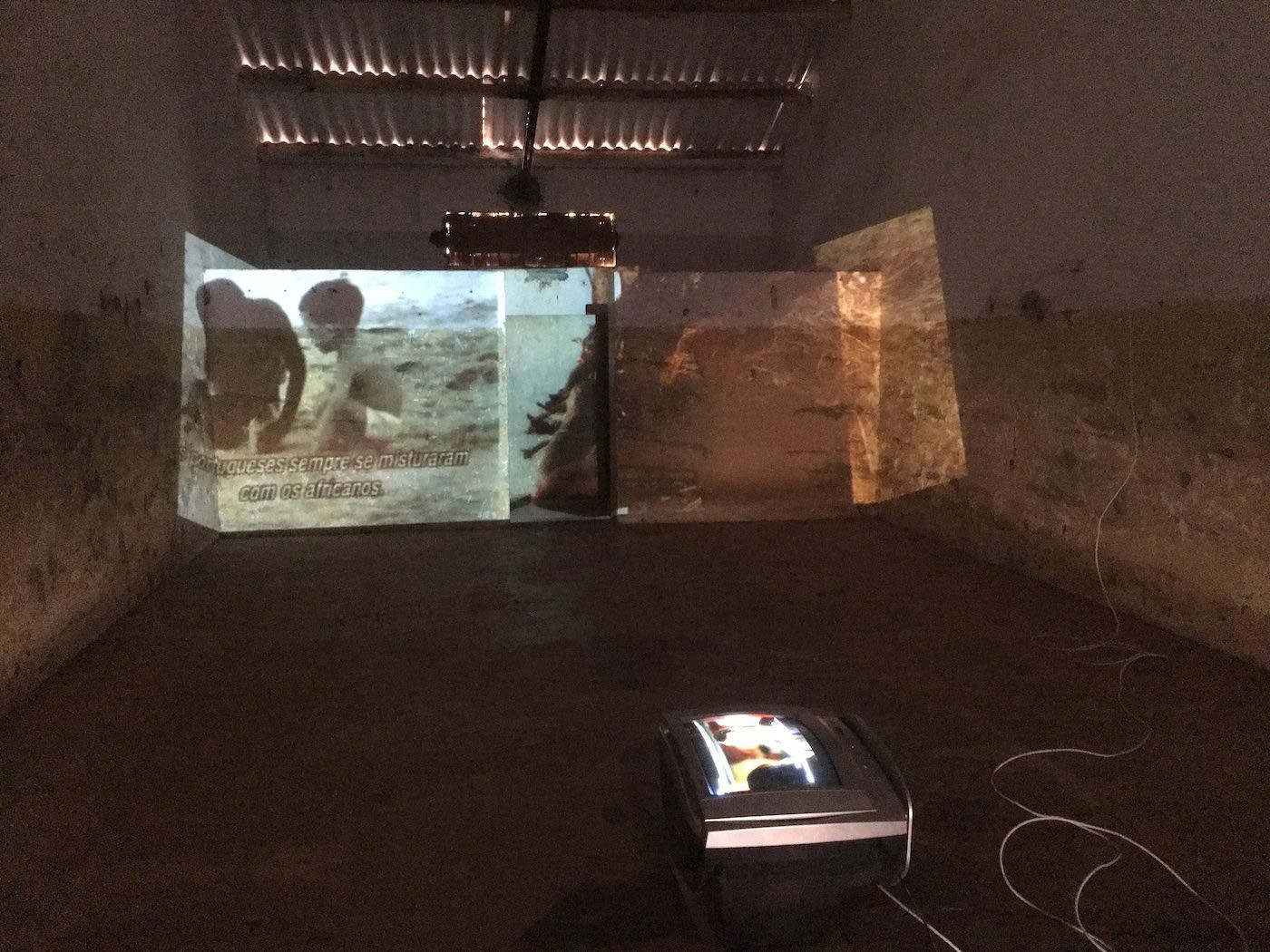Maliza Kiasuwa: Stories Intersecting Like the Crossing of Paths
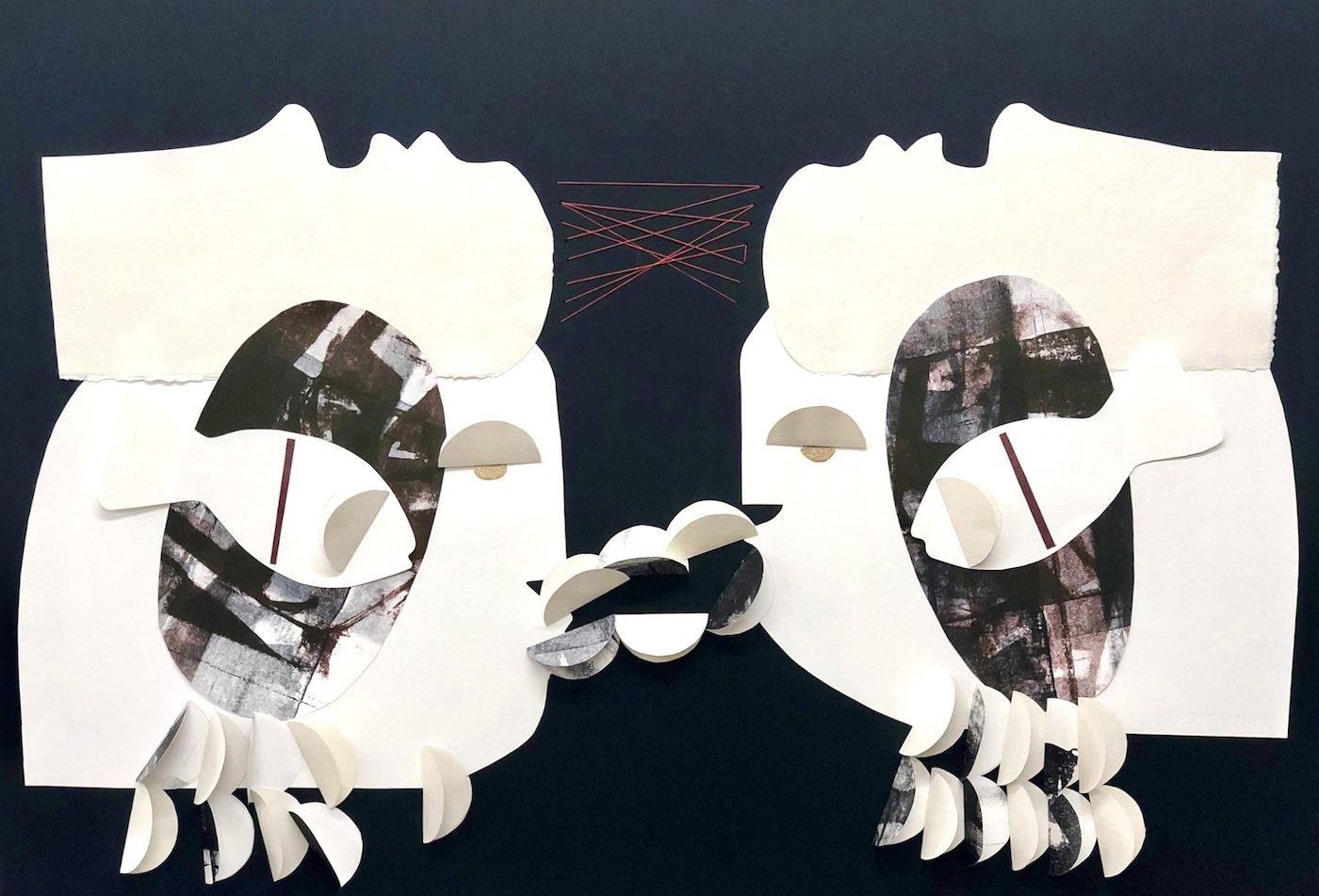
04 October 2023
Magazine C& Magazine
Words Serine ahefa Mekoun
10 min read
The artist talks about her collage practice in relation to intuition and the meaning of a hybrid identity.
SaM: Can you tell us how you came to be an artist and, more specifically, what led you to turn to collage as a means of making art?
Maliza Kiasuwa: I would call what I do assemblages rather than collages. I position things, create juxtapositions—I need to put one thing on top of another. There is a meditative side to this for me. My mother is Romanian Orthodox and my father Congolese Angolan. I grew up in Brussels, and my training as a nurse allowed me to work in a humanitarian context, which led me to travel to a range of different countries undergoing conflict. I always wanted to be an artist, but it wasn’t easy because my parents are first-generation immigrants. It’s only now that I’ve made it as an artist that I have their support. I am self-taught. My practice is wholly intuitive and instinctive. That’s how I operate in life. Working in countries where there’s conflict teaches you to be on the alert more or less all the time. You share and take on board a lot of emotions from people who are living in a state of suffering, and you find yourself at the center of geopolitical conflicts. This instinct and the rather intense experiences I’ve had in my life have been transformed and acquired a voice, which I then developed artistically. I tried my hand with textiles, then wool. I now work more with collages which, surprisingly enough, are more conceptual and abstract, but I combine these concepts with a quest for identity.
[cand-gallery image-no=1]
SaM: One of your series is called Intersections. Intersectionality is an interpretative framework that has, in recent years, been widely used in the West in artistic, academic, and activist settings in connection with power dynamics. Is there a link with the concept of intersectionality per se? And which intersections interest you and feed your approach and search for identity?
MK: The language I use is fairly simple. There are words and arts that are in fashion, but in my work I try not to be influenced by the things one hears. It’s a certain kind of stress. Sometimes I wonder whether I should do what other people are doing, talk about the same stuff. I have the feeling I’m always a bit off base in that respect. But I want to talk about something else and get out of the excessive intellectualization that stops us being authentic.
One day, my mother showed me a photograph of the church where I was baptized in Romania. In the 1980s, Ceausescu, who was head of state at the time, destroyed many Orthodox churches. A few years earlier, Patrice Lumumba had been assassinated in Congo. There are two major rivers in these countries, the Danube and the Congo, which nourish the people in some way. And then there’s me, halfway between two rivers, between two stories that have been shattered or erased, but which are part of my history. I come to feed these rivers with art. As with rivers, there are tributaries, intersections, and the stories cross one another like paths. I describe myself as a hybrid artist, even if people totally want to put me in a box labeled “woman, black, diasporic.” The cultural hybridization that runs through me makes it difficult for me to categorize myself. None of that is important to me in the end: I’m still an artist and it’s not a matter of color for me.
[cand-gallery image-no=2]
SaM: The idea of a common thread, both literal and figurative, is one that recurs in your work. There is often a process of putting things back together, a reconnecting of elements that belong to different worlds. What fragments of stories do you want to reassemble, and what is the importance of bonding in your work?
MK: I started making collages during Covid. I was in Naivasha, in Kenya, and it was impossible to travel and get hold of paper or anything at all as an artist. So I just started making collages with the materials around me. This reminded me a bit of Arte Povera in Italy, where, after the war, artists had difficulty finding the materials they wanted, so they had to make do with what there was—there was really an idea of putting things together.
That was when Black Lives Matter happened too, and for the first time there was a fairly vigorous search for identity. This mix of being unable to find material and the quest for identity produced something explosive. It was one of the most valuable moments in my artistic career. I wanted to find reconciliation rather than take sides. I wasn't quite sure whether all the colonial statues should be destroyed, for example.
At the same time, I found paintings of my white ancestors in the cellar and transformed them somewhat, Africanized them. I diverted them, and that’s what set me off with collages. You can also find this in my sculptures, where I assemble worlds. Once again, it’s a reference to my job as a nurse, where we’re stitching and trying to heal the souls of the people we meet. They also have a story that needs patching together—human history is a bit like that too, full of mixtures where we also need to learn to be reconciled with ourselves.
SaM: Can you tell us more about the artistic process that underpins this?
MK: There’s a lot of space for observing, both as an artist and as a nurse, which requires a fairly keen sense of observation. Touch is important too. I do all my work with my fingers. I started out drawing with chalk and pastels, using my children as models. Once again, this has a direct relationship with my job as a nurse. Touching people, being close to people—there’s a really tactile quality to it that I also find in my artistic work.
As far as the materials are concerned, they come my way. I start by assembling them in my head together with the colors and the paper, but you don’t always know if things will go together. It’s a bit like cooking: you try certain things, then you add some ingredients. To begin with, I find objects, anything man-made, pretty much everywhere I go. The materials I use are also fairly organic, as I’m quite close to nature. I lived for years in a very unusual environment in Kenya. I don’t know if I could have developed this concept if I’d been surrounded by concrete. It was a lot easier in Kenya. Africa is full of trash, and the idea of doing something with it really speaks to me. I’ve always liked working with raw materials and I love making beautiful things. So this involves an aesthetic search for colors, shapes, and textures, and that’s where the craft element comes in. My work is always pushing the boundary a bit between craft and sculpture.
[cand-gallery image-no=3]
SaM: The Talisman series seems to have a direct connection with Lake Naivasha in Kenya. What link did you want to create by evoking the symbolism of the talisman?
MK: I was living near Lake Naivasha, which has been an area of conflict for years. During Covid, a lot of people lost their jobs, and overfishing intensified, because people really needed to eat.
To begin with, the lake is overpopulated, which is a problem for the natural environment. In various places, it’s full of hippopotamuses, and fishermen get bitten by hippos every week. Then the lake police went and banned night fishing, prompting a number of murders. Unfortunately, it has become a lake that’s running with blood, a conflict zone. It’s a complex situation, because we understand that these people need to fish in order to survive, and at the same time there are a lot of obstacles in their way. No one’s talking about this. Between the illegal fishing by people who have to feed themselves and the corrupt police, there are the fish, which are trying to survive somehow … All this has created various tensions in the town because people have set up camp in the surrounding area. So a process of mediation was needed between the inhabitants, the fishermen, and the police. That’s where I got the idea for the talisman that would serve as protection. But it’s still difficult to find a compromise. In my view, it all happens through dialogue, through cultural messages, by everyone sitting down together to discuss how to do things.
[cand-gallery image-no=6]
SaM: Can you tell us where this mystical connection comes from—beyond the objects themselves?
MK: These are not things that it’s easy to communicate, but we have something profoundly animistic in our family DNA. We believe in things that sometimes don’t make sense to other people, even though they do to us. The Talisman series was inspired by the warriors of Mali and Congo and their gris-gris, which are cult objects. I grew up in amongst all this, with lots of Orthodox icons and candles on the one hand … and, on the other, my father collecting cult objects, figurines, and masks. All this awakened a certain curiosity in me. And besides that, there were all the other objects I collected on my travels. I think it’s important to believe in something, especially these days when a lot of young people don't believe in anything anymore. All that needs to have a voice—at the end of the day, it’s natural.
[cand-gallery image-no=4]
SaM: Who do you talk with? Is the conversation more political or spiritual in nature?
MK: First off, with myself. But I don’t think I’m an artist who seeks vindication. For me, the most important thing is to share feelings and prompt a spirit of enquiry, to get people to ask questions about what they see. The title of my last exhibition, Art as a Weapon, comes from an article on mediation that I was reading, which inspired my recent collages. My fantasy would be to gather together all the parties involved in this conflict around Lake Naivasha and engage in a form of artistic mediation. A bit like in sport, with all kinds of different people coming from here, there, and everywhere. We would manage to convey a message in a gentler way—not using force in any case—where people would understand all the evil that comes out of this conflict and transform it into art.
Maliza Kiazuwa is a visual artist of European and African descent. She is based in Brussels and lives between Belgium and Kenya. Kiasuwa creates artworks that produce stimulating and eclectic elements. Her interest in these transformative and regenerative processes comes from the desire to understand the mystery of the cycle of life.
Serine ahefa Mekoun is a multimedia journalist, writer and producer living between Brussels and West Africa. Born at the cusp of Generations Y and Z, she is interested in all the spaces where different futures can germinate. She namely writes about creative communities and how they activate social change in postcolonial contexts.
Translation from French by Simon Cowper.
Read more from



